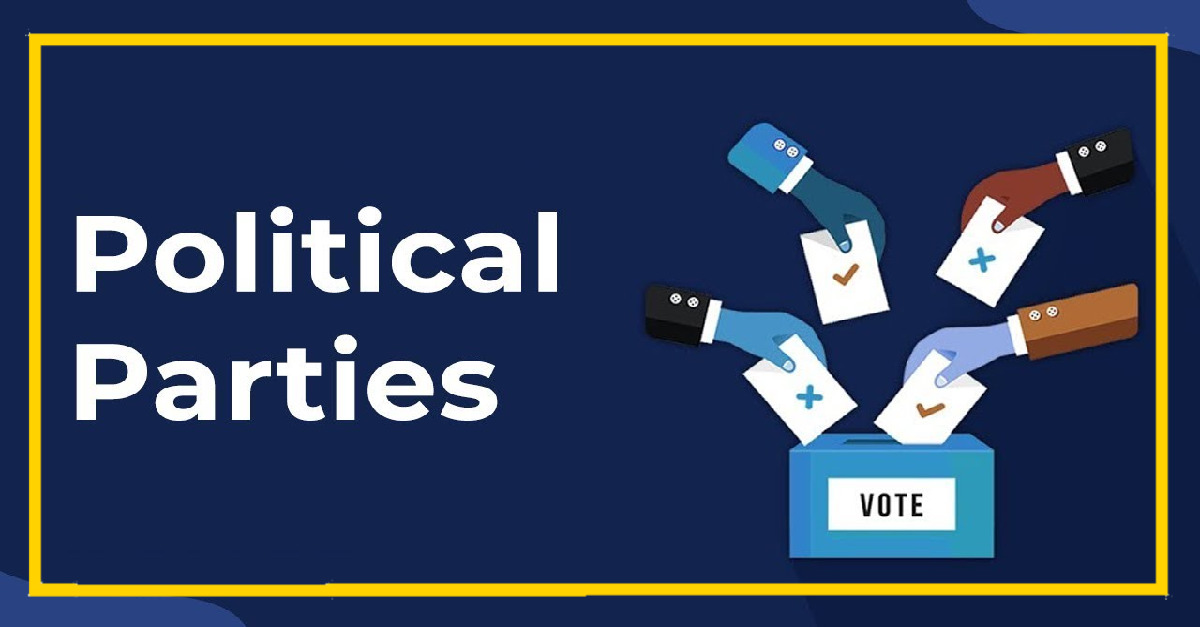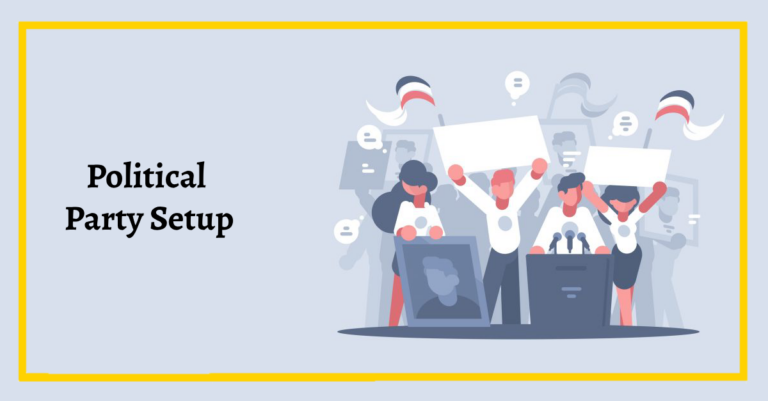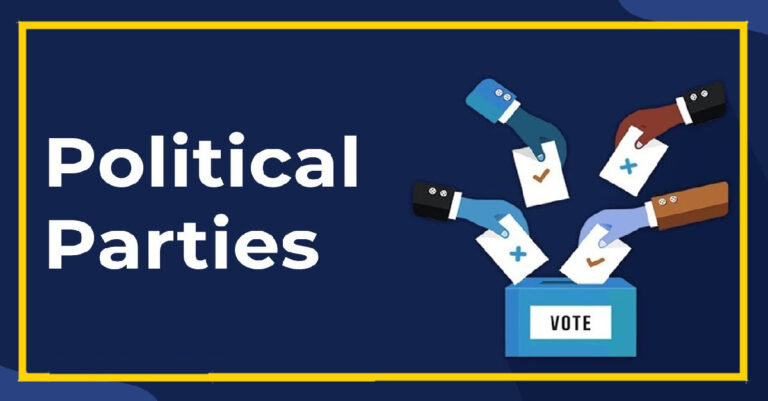A comprehensive guide delving into the timeline and stages of political party formation, offering crucial insights for aspiring political entities.
Indian History and Politics
India boasts a rich and complex history, spanning millennia and encompassing diverse cultures, empires, and political systems. Understanding this history is crucial to comprehending the current political Party landscape and India’s challenges and opportunities.
Ancient India (3300 BCE – 712 CE)
- Indus Valley Civilization (3300 – 1300 BCE): This highly advanced civilization flourished in the Indus Valley, exhibiting sophisticated urban planning, trade networks, and a unique culture.
- Vedic Period (1500 – 500 BCE): This period witnessed the composition of the Vedas, sacred texts that laid the foundation for Hinduism. The social structure was stratified by the caste system, which remains a complex issue in contemporary India.
- Rise of Jainism and Buddhism (500 – 200 BCE): These new religious movements challenged the caste system and emphasized non-violence and meditation. Buddhism spread throughout Asia and continues to be a major religion in India today.
- Mauryan Empire (322 – 185 BCE): Founded by Chandragupta Maurya, the Mauryan Empire was vast and powerful, unifying much of the Indian subcontinent under a single rule. It is considered a golden age in Indian history.
Medieval India (712 – 1857 CE)
- Regional Kingdoms: After the decline of the Mauryan Empire, India fragmented into various regional kingdoms, each with its own distinct culture and political system.
- Golden Age of North India: The Gupta Empire (320 – 550 CE) ushered in a period of peace, prosperity, and cultural flowering. This period saw advancements in art, literature, science, and mathematics.
- Islamic Influence: The arrival of Islam in the 7th century CE introduced a new religion and culture to India. Muslim dynasties, such as the Delhi Sultanate and the Mughal Empire, ruled over large parts of India for several centuries.
- Bhakti Movement: This devotional movement within Hinduism emphasized personal devotion to a chosen deity and challenged the dominance of the priestly class.
Colonial India (1857 – 1947)
- British East India Company: The British East India Company gradually gained control of large parts of India through trade and military conquest. The 1857 Sepoy Mutiny marked a major rebellion against British rule.
- Indian National Congress: Founded in 1885, the Indian National Congress became the leading political force in the struggle for independence. It adopted a multi-pronged approach, employing non-violent protests, civil disobedience, and political negotiations.
- Partition of India: In 1947, India gained independence but was partitioned into two states, India and Pakistan, along religious lines. This led to one of the largest mass migrations in human history and ongoing tensions between the two nations.
Independent India (1947 – Present)
- Dominance of the Congress Party: After independence, the Congress Party dominated Indian politics for decades, promoting a socialist and secular agenda. It played a key role in nation-building, poverty reduction, and industrial development.
- Rise of Regional Politics: In recent decades, regional parties have gained significant political influence, reflecting the diversity of India’s population and challenging the dominance of the Congress Party.
- Economic Liberalization: In the 1990s, India embarked on a path of economic liberalization, opening up its economy to foreign investment and promoting private sector growth. This led to rapid economic development but also increased income inequality.
- Challenges and Opportunities: India faces a multitude of challenges, including poverty, unemployment, corruption, environmental degradation, and social tensions. However, it also possesses a growing economy, a young population, and a vibrant democracy, offering immense potential for future progress.
A Historical Lens on Indian Politics
India’s political landscape boasts a vibrant and diverse history shaped by centuries of social, cultural, and economic transformations. The seeds of modern political parties in India were sown during the colonial era when resistance to British rule and the struggle for independence sparked the formation of various political organizations.
Early Stages (Pre-independence):
- Social Reform Movements (18th-19th Centuries): Early stirrings of political consciousness emerged through social reform movements like Brahmo Samaj and Arya Samaj, challenging social inequalities and advocating for education and women’s rights. These movements laid the groundwork for political consciousness and laid the foundation for future political parties.
- Indian National Congress (INC): Founded in 1885, the INC became the central platform for mobilizing nationalistic sentiment and demanding self-rule. It adopted a gradual approach, initially focusing on petitions and constitutional reforms. However, as the struggle intensified, the INC embraced diverse ideologies, including moderate liberalism and socialist ideals.
- Muslim League: Established in 1906, the Muslim League represented the interests of the Muslim community. Initially advocating for Muslim rights within a united India, the League later shifted towards the demand for a separate Muslim state, leading to the partition of India in 1947.
- Rise of Regional Parties: Towards the latter half of the colonial period, regional parties gained prominence, reflecting the growing political consciousness and aspirations of diverse linguistic and cultural groups within India.
Post-Independence Stages (1947-Present):
- The dominance of the Congress Party (1947-1977): After independence, the INC emerged as the dominant political force, winning five consecutive general elections. This period saw the consolidation of a socialist-leaning, centralized government that focused on poverty reduction, national integration, and industrial development.
- Era of Coalition Politics (1977-1990s): The 1970s witnessed a decline in the Congress’s popularity due to economic stagnation and political scandals. This led to the rise of regional parties and the formation of coalition governments, marking a shift towards a more fragmented and multi-party political system.
- Rise of Hindu Nationalism (1980s-present): The Bharatiya Janata Party (BJP), founded in 1980, emerged as a major force, espousing Hindu nationalist ideology and advocating for economic liberalization and social conservatism. The BJP’s rise challenged the Congress’s dominance and ushered in an era of political polarization.
- Emergence of New Political Formations (2010s-present): Recent years have seen the rise of new political parties, often led by charismatic leaders and catering to specific regional or social identities. These new formations have further diversified the political landscape and added to the complexity of coalition politics.
Stages of Political Party Formation in India:
- Idea Formation: This stage involves the identification and articulation of a shared ideology, political agenda, and goals.
- Mobilization and Organization: Building a network of supporters, establishing organizational structures, and formulating party rules and regulations are crucial at this stage.
- Electoral Participation: Political parties engage in campaigning, contesting elections, and negotiating alliances to gain political representation.
- Policy Formulation and Implementation: Once in power, parties work to implement their policies and programs, managing the government and responding to public demands.
- Adaptation and Evolution: Political parties need to adapt to changing socio-political contexts, modify their ideologies, and evolve their strategies to maintain relevance and public support.
Political Party: Challenges and Opportunities:
- Internal Democracy and Transparency: Ensuring intra-party democracy, transparent decision-making, and combating corruption remain key challenges for many parties.
- Ideological Clarity and Consistency: Some parties grapple with maintaining ideological coherence in light of shifting political alliances and changing societal values.
- Social and Economic Inequality: Addressing issues like poverty, caste discrimination, and regional disparities remains a central challenge for all political parties.
- Harnessing the Potential of Youth and Diversity: Engaging and mobilizing young voters and ensuring representation of diverse social groups are crucial for the future of Indian politics.
Indian Politics History: Elections and Major Parties
Note: This table only includes major national parties and elections. Several state-level parties and elections have also played significant roles in Indian politics.
|
Year |
Event | Election | Major Parties |
Notes |
| 1885 | Indian National Congress (INC) founded | N/A | INC | First major nationalist party |
| 1906 | Muslim League founded | N/A | Muslim League | Represented interests of Indian Muslims |
| 1919 | Montagu-Chelmsford Reforms | N/A | INC, Muslim League | Introduced limited self-government |
| 1935 | Government of India Act | N/A | INC, Muslim League | Established provincial autonomy and bicameral legislature |
| 1946 | Cabinet Mission Plan | N/A | INC, Muslim League | Proposed a loose federation of India |
| 1947 | Indian Independence | N/A | INC, Muslim League | India and Pakistan gain independence |
| 1951-52 | 1st General Election | Lok Sabha (Lower House) | INC (44.99%), Communist Party of India (CPI) (3.29%) | INC wins majority |
| 1957 | 2nd General Election | Lok Sabha | INC (47.78%), CPI (10.44%) | INC wins majority |
| 1962 | 3rd General Election | Lok Sabha | INC (44.73%), Bharatiya Jana Sangh (BJS) (6.44%) | INC wins majority |
| 1967 | 4th General Election | Lok Sabha | INC (40.73%), BJS (9.41%) | No single party gets majority |
| 1971 | 5th General Election | Lok Sabha | INC (43.68%), BJS (7.05%) | INC wins majority |
| 1977 | 6th General Election | Lok Sabha | Janata Party (43.18%), INC (34.52%) | Janata Party wins first non-INC majority |
| 1980 | 7th General Election | Lok Sabha | INC (42.69%), Janata Party (35.35%) | INC wins majority |
| 1984 | 8th General Election | Lok Sabha | INC (48.10%), BJP (7.74%) | INC wins majority |
| 1989 | 9th General Election | Lok Sabha | INC (39.53%), BJP (20.80%) | No single party gets majority |
| 1991 | 10th General Election | Lok Sabha | INC (36.57%), BJP (20.11%) | INC wins minority government with support of other parties |
| 1996 | 11th General Election | Lok Sabha | BJP (20.29%), Janata Dal (19.74%) | No single party gets majority |
| 1998 | 12th General Election | Lok Sabha | BJP (25.59%), INC (25.82%) | BJP leads National Democratic Alliance (NDA) to first majority |
| 1999 | 13th General Election | Lok Sabha | BJP (23.75%), INC (28.51%) | NDA wins majority |
| 2004 | 14th General Election | Lok Sabha | INC (26.53%), BJP (22.16%) | INC leads United Progressive Alliance (UPA) to majority |
| 2009 | 15th General Election | Lok Sabha | INC (28.55%), BJP (18.80%) | UPA wins majority |
| 2014 | 16th General Election | Lok Sabha | BJP (31.00%), INC (19.52%) | BJP wins first single-party majority since 1984 |
| 2019 | 17th General Election | Lok Sabha | BJP (37.36%), INC (19.52%) | BJP wins second consecutive majority |
Additional Parties:
- Communist Party of India (Marxist) (CPI(M))
- Bahujan Samaj Party (BSP)
- All India Trinamool Congress (TMC)
- Dravida Munnetra Kazhagam (DMK)
- Telugu Desam Party (TDP)
Conclusion:
Political Party Understanding the timeline and stages of political party formation in India offers valuable insights into the evolution of the country’s political landscape. From the early struggles for independence to the current era of coalition politics, political parties have played a pivotal role in shaping India’s destiny. As the nation continues to grapple with complex social, economic, and political challenges, the future of Indian politics will depend on the ability of political parties to address these challenges effectively, adapt to changing circumstances, and remain accountable to the people they represent. Talk to our Vakilsearch experts and learn more!











